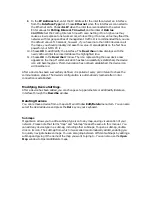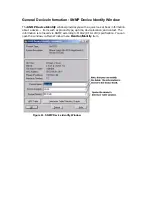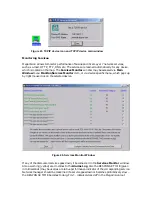
•
Rising Event Index:
The Index from the Events Table (see below) which corresponds to
Rising Event.
•
Falling Event Index:
The Index from the Events Table (see below), which corresponds to
Falling Event.
•
Start Up:
The start-up alarm, i.e., conditions for an alarm to be sent as a result of the first
sample. You may select from:
Rising, Falling
, or
RisingOrFalling
.
•
Owner String:
String to Identify the entry owner (usually not required).
Press
OK
in the
Add RMON Group 3 window
(Figure 32) in order to add the new event
description (new Alarm Control Entry). If the Create operation fails, it may mean that
RMON Group 3 is not supported for this device.
IMPORTANT:
In order to create an Alarm Control Entry, you must have at least one Event
in the Events Table (see below). Without one, you will not be able to enter a Rising Event
Index and a Falling Event Index.
Click on the
Delete
button (Figure 32) in order to delete the selected Alarm Control Entry.
Events Table
The
Events Table
entries contain descriptive information for all the events, which are
"triggered" by current network conditions according to the
Alarms Control Table
. If this
table is empty it may be due to one of the following reasons:
•
RMON Group 9 is not supported on this device.
•
RMON Group 9 is supported but there are no event entries. You can create an event entry
by clicking on the
Create
button. The Add Event (RMON Group 9) window opens.
Figure 34. Add Event (RMON Group 9) Window
You must enter some information, which describes the event
:
•
Event Type:
Defines the notification that takes place when the event is triggered. You
may select from the following: None, Log, SNMP Trap, Log, and Trap.
















































